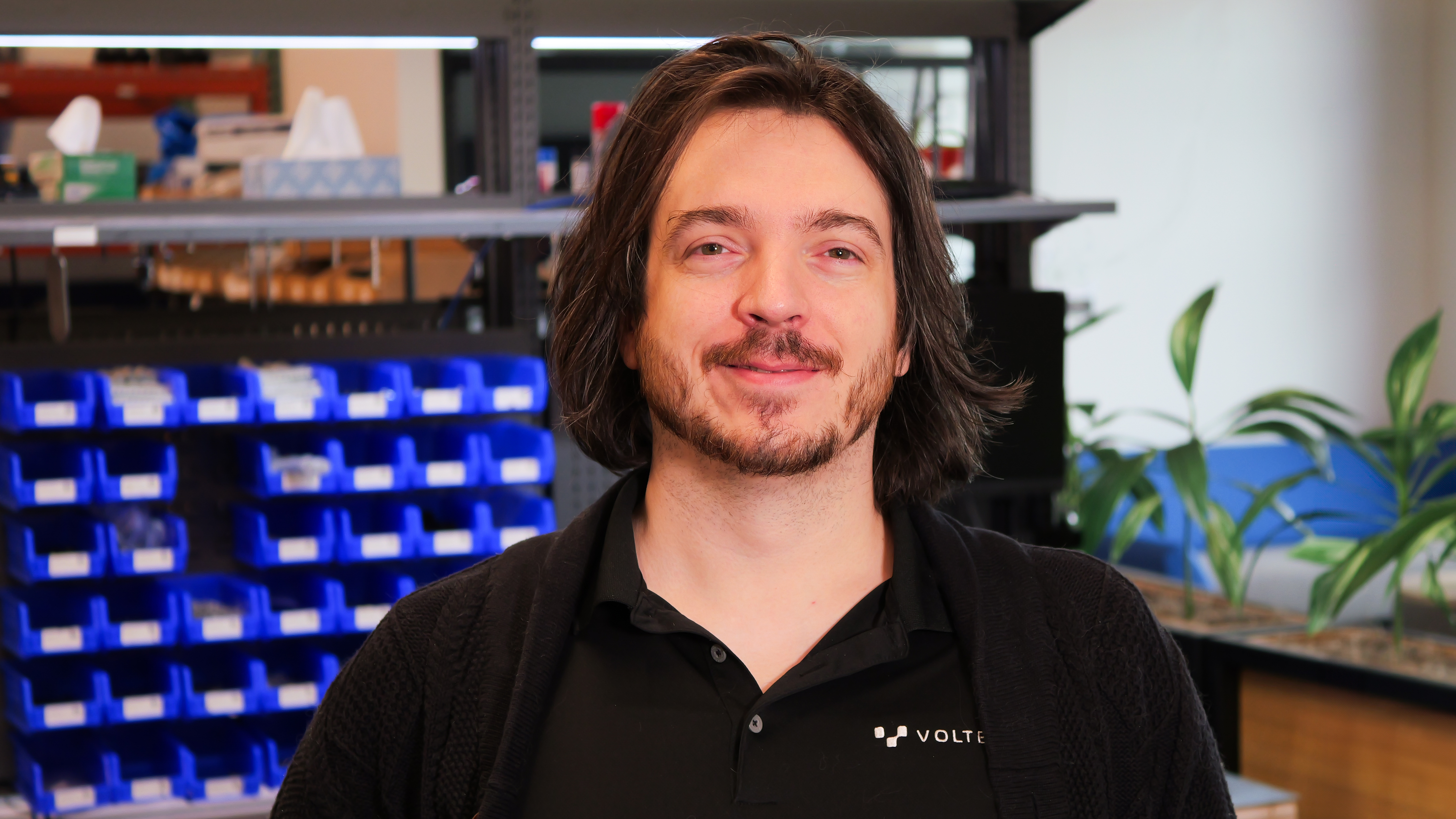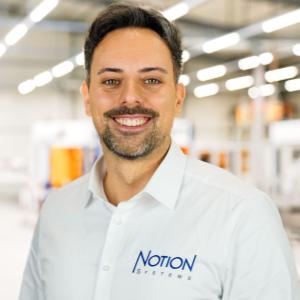We invite all engineers, researchers, entrepreneurs, inventors, and end users active in the development or manufacturing or applications of perovskite technology to join this fantastic one-day event.
This one-day curated event focuses on all aspects of perovskite technologies, from material development to processing to applications in lighting, displays, photovoltaics, and beyond.
This event is co-organised by TechBlick and Perovskite-Info.com.
This event will also feature a parallel track dedicated to innovations in (a) additive, printed, hybrid and sustainable electronics and (2) MicroLED + AR/VR display technologies.
Full Agenda
Berlin Time
Sumitomo Metal Mining

Sumitomo Metal Mining
Development of nano copper powder with oxidation-resistant and air stable copper based MOD Paste for Printed Electronics
1:30 PM
joint
Abstract

Kentaro Nakatsuji
We develop unique conductive materials for an energy-smart, sustainable world using our core technique. This talk introduces newly developed items, which are oxidation-resistant nano copper powder and MOD (metal-organic decomposition) paste for printed electronics. Our fine copper powder shows uniform size, strong oxidation resistance, and dense sintering near 200℃.
Also, MOD paste consists of MOD ink and its Cu powder to obtain film thickness—from thin lines to thick buses, over 3× typical nano inks—while keeping copper-like conductivity.
During curing, a protective layer forms on Cu, enabling reliable, low-resistance paths for high-current and large-area devices and compact modules. We aim to bring affordable, scalable copper printing to mainstream manufacturing.
Development of nano copper powder with oxidation-resistant and air stable copper based MOD Paste for Printed Electronics
1:30 PM
We develop unique conductive materials for an energy-smart, sustainable world using our core technique. This talk introduces newly developed items, which are oxidation-resistant nano copper powder and MOD (metal-organic decomposition) paste for printed electronics. Our fine copper powder shows uniform size, strong oxidation resistance, and dense sintering near 200℃.
Also, MOD paste consists of MOD ink and its Cu powder to obtain film thickness—from thin lines to thick buses, over 3× typical nano inks—while keeping copper-like conductivity.
During curing, a protective layer forms on Cu, enabling reliable, low-resistance paths for high-current and large-area devices and compact modules. We aim to bring affordable, scalable copper printing to mainstream manufacturing.
Arkema Piezotech
Arkema Piezotech
Electroactive Polymers: Bringing Sensitivity to Printed Electronics
1:45 pm
joint
Abstract
Mickael Pruvost
Research And Development Engineer
Printed electronics are evolving fast, and electroactive polymers are paving the way for a new generation of devices that don’t just perform—they feel. Available as powders, inks, and films, these materials combine the versatility of polymers with piezoelectric functionality, enabling electronics that respond to touch, vibration, and impact.
With their printability, flexibility, and lightweight design, electroactive polymers make it possible to create highly sensitive sensors across a wide frequency range. They are already opening opportunities in automotive (safer human–machine interfaces), energy (structural health monitoring of hydrogen tanks and batteries), healthcare (vital signs monitoring), acoustics (musical pickups), and sports (impact detection).
This talk will demystify piezoelectric polymers and show how they can be implemented in real applications. Attendees will discover why these materials are an essential platform for innovation in tomorrow’s smart and sustainable electronics.
Electroactive Polymers: Bringing Sensitivity to Printed Electronics
1:45 pm
Printed electronics are evolving fast, and electroactive polymers are paving the way for a new generation of devices that don’t just perform—they feel. Available as powders, inks, and films, these materials combine the versatility of polymers with piezoelectric functionality, enabling electronics that respond to touch, vibration, and impact.
With their printability, flexibility, and lightweight design, electroactive polymers make it possible to create highly sensitive sensors across a wide frequency range. They are already opening opportunities in automotive (safer human–machine interfaces), energy (structural health monitoring of hydrogen tanks and batteries), healthcare (vital signs monitoring), acoustics (musical pickups), and sports (impact detection).
This talk will demystify piezoelectric polymers and show how they can be implemented in real applications. Attendees will discover why these materials are an essential platform for innovation in tomorrow’s smart and sustainable electronics.
NanoSen GmbH
NanoSen GmbH
NanoSen PNC Force Sensors for Printed and Hybrid Electronics
2:00 pm
joint
Abstract
Joseph Stephens
Grndungsmitglied
This 10-minute tech talk introduces NanoSen PNC Force Sensors, a breakthrough in printed and hybrid electronics. Leveraging our specially developed piezoresitive and piezocapacitive polymer nanocomposite (PNC) material, this sensor material can be seamlessly integrated with flexible substrates, enabling robust, sensitive, and adaptable force measurements via impedance readout electronics. A single 20mm sensor can measure 0.01 newton - 150 newton and withstand 20 megapascals of pressure before the material is damaged. We have also tested the robustness with 20 million cycles á 200 newtons of force, without experiencing material degredation.
The talk will highlight their durability, flexibility for applications like wearables and robotics, and high sensitivity for precise force detection in medical and consumer devices. Attendees will explore real-world use cases with printed electrodes made from different substrates and configurations to show the future potential of this innovative technology.
NanoSen PNC Force Sensors for Printed and Hybrid Electronics
2:00 pm
This 10-minute tech talk introduces NanoSen PNC Force Sensors, a breakthrough in printed and hybrid electronics. Leveraging our specially developed piezoresitive and piezocapacitive polymer nanocomposite (PNC) material, this sensor material can be seamlessly integrated with flexible substrates, enabling robust, sensitive, and adaptable force measurements via impedance readout electronics. A single 20mm sensor can measure 0.01 newton - 150 newton and withstand 20 megapascals of pressure before the material is damaged. We have also tested the robustness with 20 million cycles á 200 newtons of force, without experiencing material degredation.
The talk will highlight their durability, flexibility for applications like wearables and robotics, and high sensitivity for precise force detection in medical and consumer devices. Attendees will explore real-world use cases with printed electrodes made from different substrates and configurations to show the future potential of this innovative technology.
Integrated Graphene (iGii)

Integrated Graphene (iGii)
Revolutionsing Functional Devices : A Scalable 3D Carbon Nanomaterial Platform for Next-Generation Applications
2:15 pm
joint
Abstract
Michelle Ntola
Principle Development Scientist
Three-dimensional (3D) carbon nanomaterials are transforming the landscape of functional materials, unlocking new possibilities in sectors ranging from diagnostics and energy storage to smart sensing and thermal management. Their unique three-dimensional architecture and tuneable properties enable the development of high-performance, cost-effective, and sustainable solutions that are compatible with existing technology systems.
At the forefront of this innovation is Gii, our proprietary 3D carbon material platform, engineered for seamless integration across diverse application systems. This presentation will showcase recent breakthroughs in Gii’s deployment across a spectrum of use cases, including:
Electrochemical sensing: for real-time diagnostics and environmental monitoring
Printed batteries: for flexible, lightweight energy storage, IoT, wearables, and digital health applications
Pressure and strain sensors: for wearable devices and occupancy monitoring
Microheaters: for localised thermal control in biosensors, microreactors and other compact systems
Catalytic platforms: for energy and chemical processing applications
Gii™ not only addresses the limitations of conventional material system, such as durability, high cost, and limited scalability, but also delivers superior performance metrics:
High surface area: specific electroactive surface area of 3 – 4 times the geometric area
Electrical conductivity: 5 – 10 Ω/square at room temperature
Functionalisation: can be functionalised with metal oxides, bioreceptors, ion-selective membranes
Thermal conductivity: 3.8 W/mK and temperature coefficient of resistance of 0.0013/°C to -0.000488/°C)
Chemical stability: compatible with most organic and aqueous solutions, stable in solutions from pH 0 – pH 10
Anti-fouling: no performance loss after 30 min exposure in whole milk
Additionally, Gii is manufactured using roll-to-roll and roll-to-sheet compatible, low-temperature fabrication processes, enabling scalable production capable of producing 80 million parts per year per machine. This positions Gii as a commercially viable solution for industries seeking to accelerate product innovation without compromising on performance, cost or sustainability.
Join our presentation to explore how Gi is redefining advanced materials for next-generation devices and how your industry can benefit from its potential.
Revolutionsing Functional Devices : A Scalable 3D Carbon Nanomaterial Platform for Next-Generation Applications
2:15 pm
Three-dimensional (3D) carbon nanomaterials are transforming the landscape of functional materials, unlocking new possibilities in sectors ranging from diagnostics and energy storage to smart sensing and thermal management. Their unique three-dimensional architecture and tuneable properties enable the development of high-performance, cost-effective, and sustainable solutions that are compatible with existing technology systems.
At the forefront of this innovation is Gii, our proprietary 3D carbon material platform, engineered for seamless integration across diverse application systems. This presentation will showcase recent breakthroughs in Gii’s deployment across a spectrum of use cases, including:
Electrochemical sensing: for real-time diagnostics and environmental monitoring
Printed batteries: for flexible, lightweight energy storage, IoT, wearables, and digital health applications
Pressure and strain sensors: for wearable devices and occupancy monitoring
Microheaters: for localised thermal control in biosensors, microreactors and other compact systems
Catalytic platforms: for energy and chemical processing applications
Gii™ not only addresses the limitations of conventional material system, such as durability, high cost, and limited scalability, but also delivers superior performance metrics:
High surface area: specific electroactive surface area of 3 – 4 times the geometric area
Electrical conductivity: 5 – 10 Ω/square at room temperature
Functionalisation: can be functionalised with metal oxides, bioreceptors, ion-selective membranes
Thermal conductivity: 3.8 W/mK and temperature coefficient of resistance of 0.0013/°C to -0.000488/°C)
Chemical stability: compatible with most organic and aqueous solutions, stable in solutions from pH 0 – pH 10
Anti-fouling: no performance loss after 30 min exposure in whole milk
Additionally, Gii is manufactured using roll-to-roll and roll-to-sheet compatible, low-temperature fabrication processes, enabling scalable production capable of producing 80 million parts per year per machine. This positions Gii as a commercially viable solution for industries seeking to accelerate product innovation without compromising on performance, cost or sustainability.
Join our presentation to explore how Gi is redefining advanced materials for next-generation devices and how your industry can benefit from its potential.
Exhibition & Refreshment Break
Exhibition & Refreshment Break
Exhibition & Refreshment Break
2:30 PM
joint
Abstract
Exhibition & Refreshment Break
2:30 PM
Alqio
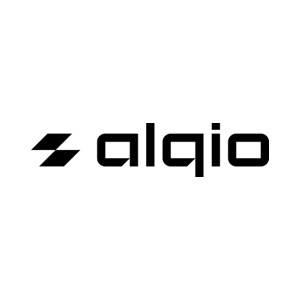
Alqio
Empowering Scalable Innovation in Functional Surfaces
3:00 pm
joint
Abstract
Fabien Resweber
Armor Smart Films, an ARMOR Group company is a trusted industrial partner, supporting clients from design to large-scale production of functionalized surfaces.
With advanced capabilities in coating, printing, and formulation, Armor Smart helps accelerate innovation and market entry.
A key focus lies in electroactive technologies using P(VDF-TrFE) copolymers, known for their excellent piezoelectric properties.
These materials enable the development of next-generation sensors, haptic interfaces, heating surfaces, and medical instrumentation—combining flexibility, efficiency, and seamless integration.
Empowering Scalable Innovation in Functional Surfaces
3:00 pm
Armor Smart Films, an ARMOR Group company is a trusted industrial partner, supporting clients from design to large-scale production of functionalized surfaces.
With advanced capabilities in coating, printing, and formulation, Armor Smart helps accelerate innovation and market entry.
A key focus lies in electroactive technologies using P(VDF-TrFE) copolymers, known for their excellent piezoelectric properties.
These materials enable the development of next-generation sensors, haptic interfaces, heating surfaces, and medical instrumentation—combining flexibility, efficiency, and seamless integration.
BLACKLEAF
BLACKLEAF
Graphene-based Electric Heating: How Graphene Films Are Reinventing Surface Heating in the Industry
3:15 pm
joint
Abstract
Michael Friess
Sales director
Blackleaf produces graphene-based heating inks.
Thanks to an innovative and sustainable graphene production process, combined with deep expertise in chemical formulation, we offer our clients comprehensive solutions and a diversified portfolio of graphene-based heatable inks.
Our heating inks are used to bring heat onto surfaces through two complementary methods: flexible heating foils and heating coatings.
Graphene-based Electric Heating: How Graphene Films Are Reinventing Surface Heating in the Industry
3:15 pm
Blackleaf produces graphene-based heating inks.
Thanks to an innovative and sustainable graphene production process, combined with deep expertise in chemical formulation, we offer our clients comprehensive solutions and a diversified portfolio of graphene-based heatable inks.
Our heating inks are used to bring heat onto surfaces through two complementary methods: flexible heating foils and heating coatings.
Komori America Corporation
Komori America Corporation
Advancing Micro-Printing: High-Precision Gravure Offset for Next-Generation Electronics
3:30 pm
joint
Abstract
Reza Kazemi
Business Development Manager
Using gravure offset technology under development, we have created an advanced micro-printing process capable of producing fine patterns with high positional accuracy (±5 µm, 3σ) and feature sizes down to 5 µm. This approach enables precise alignment for multilayer printing, allowing controlled thickness build-up without defects. It is optimized for micro-solder and copper paste deposition, supporting next-generation applications such as high-density surface-mount components, micro-bumps, and micro-LED assembly. By eliminating plating processes, it offers an eco-friendly alternative while ensuring high reliability and strong resistance to migration. Ongoing developments include nano-copper pastes with excellent conductivity and fine-line capability, expanding the potential for dense, high-performance interconnects in advanced packaging and printed electronics.
Advancing Micro-Printing: High-Precision Gravure Offset for Next-Generation Electronics
3:30 pm
Using gravure offset technology under development, we have created an advanced micro-printing process capable of producing fine patterns with high positional accuracy (±5 µm, 3σ) and feature sizes down to 5 µm. This approach enables precise alignment for multilayer printing, allowing controlled thickness build-up without defects. It is optimized for micro-solder and copper paste deposition, supporting next-generation applications such as high-density surface-mount components, micro-bumps, and micro-LED assembly. By eliminating plating processes, it offers an eco-friendly alternative while ensuring high reliability and strong resistance to migration. Ongoing developments include nano-copper pastes with excellent conductivity and fine-line capability, expanding the potential for dense, high-performance interconnects in advanced packaging and printed electronics.
Policrom Screens Spa
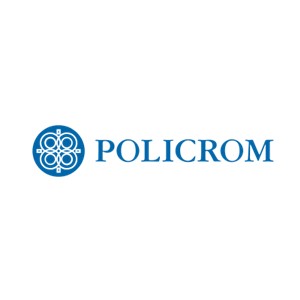
Policrom Screens Spa
Innovation in TPU
3:45 pm
joint
Abstract
Giorgio Bisutti
President
Printing electrical circuits on TPU (thermoplastic polyurethane) substrates opens the door to a wide range of applications in wearable and flexible electronics. Typically, though not exclusively, these circuits are transferred onto woven or nonwoven textiles, enabling functions such as signal transmission, stretch monitoring, heat transfer, and more.
The Challenges
Despite its potential, screen printing conductive and carbon inks on TPU presents significant difficulties:
• Printing process: TPU sheets often stick to the mesh or lift off the platen, disrupting the process.
• Curing phase: Exposure to the curing temperature compromises the flatness and dimensional accuracy of TPU, causing a total loss of image registration.
• Transfer to textile: During the final bonding step, the heat required to adhere the printed circuit to the textile softens the TPU, damaging the tracks and reducing conductivity.
These issues frequently lead to high scrap rates and, in many cases, make it impossible to produce a reliable circuit.
Our Solution:
To overcome these challenges, we have developed a dedicated product line and an application process that eliminate the critical issues of TPU printing and enable the production of multi-layer circuits.
This innovative material combines:
• A multilayer TPU film
• A heat-stabilized PET film
The lamination of these two components ensures perfect flatness and thermal stability, both essential for consistent and accurate printing results.
When used together with our encapsulant product, it becomes part of a system specifically designed for multi-layer electronic circuits, ensuring durability, reliability, and improved conductivity
Innovation in TPU
3:45 pm
Printing electrical circuits on TPU (thermoplastic polyurethane) substrates opens the door to a wide range of applications in wearable and flexible electronics. Typically, though not exclusively, these circuits are transferred onto woven or nonwoven textiles, enabling functions such as signal transmission, stretch monitoring, heat transfer, and more.
The Challenges
Despite its potential, screen printing conductive and carbon inks on TPU presents significant difficulties:
• Printing process: TPU sheets often stick to the mesh or lift off the platen, disrupting the process.
• Curing phase: Exposure to the curing temperature compromises the flatness and dimensional accuracy of TPU, causing a total loss of image registration.
• Transfer to textile: During the final bonding step, the heat required to adhere the printed circuit to the textile softens the TPU, damaging the tracks and reducing conductivity.
These issues frequently lead to high scrap rates and, in many cases, make it impossible to produce a reliable circuit.
Our Solution:
To overcome these challenges, we have developed a dedicated product line and an application process that eliminate the critical issues of TPU printing and enable the production of multi-layer circuits.
This innovative material combines:
• A multilayer TPU film
• A heat-stabilized PET film
The lamination of these two components ensures perfect flatness and thermal stability, both essential for consistent and accurate printing results.
When used together with our encapsulant product, it becomes part of a system specifically designed for multi-layer electronic circuits, ensuring durability, reliability, and improved conductivity
Nagase ChemteX America, LLC.
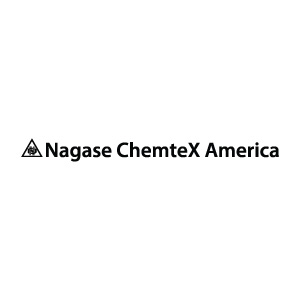
Nagase ChemteX America, LLC.
Conductive Inks for Medical/ Wearable Electronics
4:00 pm
joint
Abstract
Alan Brown
Visible
Screen printed conductive inks offer a cost-effective and versatile method for creating biosensors. By depositing these inks onto flexible substrates, researchers can fabricate conformable and lightweight sensing platforms. This technique is particularly valuable for developing point-of-care diagnostics and wearable devices for continuous health monitoring, as it allows for the rapid and scalable production of sensors with high sensitivity and specificity.
Conductive Inks for Medical/ Wearable Electronics
4:00 pm
Screen printed conductive inks offer a cost-effective and versatile method for creating biosensors. By depositing these inks onto flexible substrates, researchers can fabricate conformable and lightweight sensing platforms. This technique is particularly valuable for developing point-of-care diagnostics and wearable devices for continuous health monitoring, as it allows for the rapid and scalable production of sensors with high sensitivity and specificity.
Exhibition & Refreshment Break
Exhibition & Refreshment Break
Exhibition & Refreshment Break
4:15 pm
joint
Abstract
Exhibition & Refreshment Break
4:15 pm
DELO Industrial Adhesives
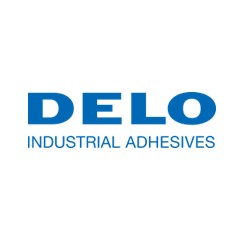
DELO Industrial Adhesives
Investigation of Electrically Conductive Adhesives for Miniaturized SMD Components
4:45 pm
joint
Abstract

Sven Hujo
Reliability of adhesives for MiniLED/MicroLED interconnects
This study investigates the long-term reliability of directional conductive adhesives (DCA) for electrical and mechanical interconnects in MiniLED and MicroLED applications. Building on a previous feasibility study from 2024, the adhesive bonds are subjected to extensive temperature and moisture resistance testing.
Key points:
- Evaluation of three adhesives for semiconductor mass production
- Performance of "light-on" tests, measurement of die-shear strength and U-I characteristics
- Tests under different conditions: Initial, after 500 h at 85°C/85% RH and after 500 h at 120°C
- Analysis of electrical and mechanical properties before and after storage
The results show excellent stability of the adhesive bonds, especially at 120°C storage.
This study represents an important step towards the commercialization of MiniLED and MicroLED applications and positions adhesive technology as a key element for future scalability and cost efficiency in production
Investigation of Electrically Conductive Adhesives for Miniaturized SMD Components
4:45 pm
Reliability of adhesives for MiniLED/MicroLED interconnects
This study investigates the long-term reliability of directional conductive adhesives (DCA) for electrical and mechanical interconnects in MiniLED and MicroLED applications. Building on a previous feasibility study from 2024, the adhesive bonds are subjected to extensive temperature and moisture resistance testing.
Key points:
- Evaluation of three adhesives for semiconductor mass production
- Performance of "light-on" tests, measurement of die-shear strength and U-I characteristics
- Tests under different conditions: Initial, after 500 h at 85°C/85% RH and after 500 h at 120°C
- Analysis of electrical and mechanical properties before and after storage
The results show excellent stability of the adhesive bonds, especially at 120°C storage.
This study represents an important step towards the commercialization of MiniLED and MicroLED applications and positions adhesive technology as a key element for future scalability and cost efficiency in production
Heraeus Electronics
Heraeus Electronics
How altering drying properties affects conductive ink performance
5:00 pm
joint
Abstract
Jessica Waite
The performance of silver conductive inks is critically influenced by the parameters of the drying process, particularly temperature and time. This presentation explores how these factors affect the electrical conductivity, adhesion, and overall functionality of printed silver traces. Through a series of controlled experiments, we examine the interplay between drying temperature and duration, highlighting optimal conditions for achieving low resistivity and robust film formation without compromising substrate compatibility.
How altering drying properties affects conductive ink performance
5:00 pm
The performance of silver conductive inks is critically influenced by the parameters of the drying process, particularly temperature and time. This presentation explores how these factors affect the electrical conductivity, adhesion, and overall functionality of printed silver traces. Through a series of controlled experiments, we examine the interplay between drying temperature and duration, highlighting optimal conditions for achieving low resistivity and robust film formation without compromising substrate compatibility.
Voltera

Voltera
Connector Technologies and Integration Strategies for Flexible, Stretchable, and Rigid Electronics
5:15 pm
joint
Abstract
Thomas Pol
Material Science Technician
Given the fast-evolving landscape of hybrid electronics, the challenge of creating reliable interconnects between flexible, stretchable, and rigid circuits has become increasingly important. This presentation will provide a technical overview of the latest connector technologies and integration methods designed to meet the demands of emerging electronic systems.
Key topics will include:
- A review of connector types and selection criteria based on mechanical, electrical, and environmental requirements
- Technical specifications and recent innovations in connector design for hybrid electronics
- Best practices for attaching connectors to diverse substrates, including soldering to flex circuits, heat sealing, and other bonding techniques
- Testing methodologies for evaluating connection durability under stress, abrasion, and environmental exposure
Attendees will gain practical insights into designing and implementing robust interconnects for next-generation flexible and hybrid electronic devices.
Connector Technologies and Integration Strategies for Flexible, Stretchable, and Rigid Electronics
5:15 pm
Given the fast-evolving landscape of hybrid electronics, the challenge of creating reliable interconnects between flexible, stretchable, and rigid circuits has become increasingly important. This presentation will provide a technical overview of the latest connector technologies and integration methods designed to meet the demands of emerging electronic systems.
Key topics will include:
- A review of connector types and selection criteria based on mechanical, electrical, and environmental requirements
- Technical specifications and recent innovations in connector design for hybrid electronics
- Best practices for attaching connectors to diverse substrates, including soldering to flex circuits, heat sealing, and other bonding techniques
- Testing methodologies for evaluating connection durability under stress, abrasion, and environmental exposure
Attendees will gain practical insights into designing and implementing robust interconnects for next-generation flexible and hybrid electronic devices.
Exhibition & Refreshment Break
Exhibition & Refreshment Break
Exhibition & Refreshment Break
5:30 pm
joint
Abstract
Exhibition & Refreshment Break
5:30 pm
Profactor GmbH
Profactor GmbH
Multi-Material Inkjet Printing for Smart Textile Applications
6:00PM
joint
Abstract
Max Scherf
Research Engineer
Europe’s aging population poses significant challenges to healthcare systems, raising concerns about the long-term sustainability of social health infrastructure. This demographic shift will drive a growing need for personalized, comprehensive care tailored to elderly patients' specific requirements, alongside enhanced caregiver support and the adoption of advanced technologies like telemedicine and remote monitoring. Recent advancements in digital inkjet printing have unlocked new possibilities for textile functionalization, offering unprecedented levels of customization and seamless integration of electronic devices. This study examines the fabrication of a wearable smart belt by combining dual-sided embroidery for electrical interconnections with multi-material inkjet printing and a tailored low-temperature bonding process to directly assemble electronic SMDs onto textiles. To establish contact with the electronic island for heart rate measurement on the back of the belt, contact surfaces were created on the back using embroidery, like the principle of vias in PCB production. A key innovation lies in the dual-sided embroidery of conductive yarn, complemented by the inkjet printing of electronic islands. This design enables the interconnection of multiple sensors, which are prominently displayed on the belt's front side, offering a novel and effective solution for integrating smart functionality into textiles.
Multi-Material Inkjet Printing for Smart Textile Applications
6:00PM
Europe’s aging population poses significant challenges to healthcare systems, raising concerns about the long-term sustainability of social health infrastructure. This demographic shift will drive a growing need for personalized, comprehensive care tailored to elderly patients' specific requirements, alongside enhanced caregiver support and the adoption of advanced technologies like telemedicine and remote monitoring. Recent advancements in digital inkjet printing have unlocked new possibilities for textile functionalization, offering unprecedented levels of customization and seamless integration of electronic devices. This study examines the fabrication of a wearable smart belt by combining dual-sided embroidery for electrical interconnections with multi-material inkjet printing and a tailored low-temperature bonding process to directly assemble electronic SMDs onto textiles. To establish contact with the electronic island for heart rate measurement on the back of the belt, contact surfaces were created on the back using embroidery, like the principle of vias in PCB production. A key innovation lies in the dual-sided embroidery of conductive yarn, complemented by the inkjet printing of electronic islands. This design enables the interconnection of multiple sensors, which are prominently displayed on the belt's front side, offering a novel and effective solution for integrating smart functionality into textiles.
Graphene Engineering and Innovation Centre - University of Manchester
Graphene Engineering and Innovation Centre - University of Manchester
Graphene and 2D Material Inks: Conductive, Optical and Beyond
6:15 pm
joint
Abstract
Andrew Strudwick
Senior Application Specialist
Graphene and 2D materials have the potential to revolutionise the world as we know it. Graphene has reached a tipping point, and we are now seeing real-world benefits living up to the early excitement of just a few years ago. Collaboration is key to realising graphene’s potential, and building a community of partners will accelerate the step change in graphene’s commercial prospects.
With world-class facilities and resources, supported by experienced and knowledgeable applications engineers and internationally renowned academics, we work across a broad range of novel technologies and applications and can help you design, develop, scale and launch the next generation of innovative products and processes. With a portfolio of over 500 completed projects to date, the team are highly skilled and focussed on delivering research to meet the needs of our partners.
This talk will cover (i) the main application areas covered by our expertise, (ii) the options available for engaging with us and (iii) an overview of our printed and flexible electronic capabilities. There will be emphasis on how our pilot-scale printing equipment can help companies to develop graphene and 2D material-based solutions to problems existing across a wide range of application areas. We have successfully worked with industry on technologies such as sensors for environmental and health monitoring, flexible electronic devices, and energy-efficient heating elements, plus many more.
Graphene and 2D Material Inks: Conductive, Optical and Beyond
6:15 pm
Graphene and 2D materials have the potential to revolutionise the world as we know it. Graphene has reached a tipping point, and we are now seeing real-world benefits living up to the early excitement of just a few years ago. Collaboration is key to realising graphene’s potential, and building a community of partners will accelerate the step change in graphene’s commercial prospects.
With world-class facilities and resources, supported by experienced and knowledgeable applications engineers and internationally renowned academics, we work across a broad range of novel technologies and applications and can help you design, develop, scale and launch the next generation of innovative products and processes. With a portfolio of over 500 completed projects to date, the team are highly skilled and focussed on delivering research to meet the needs of our partners.
This talk will cover (i) the main application areas covered by our expertise, (ii) the options available for engaging with us and (iii) an overview of our printed and flexible electronic capabilities. There will be emphasis on how our pilot-scale printing equipment can help companies to develop graphene and 2D material-based solutions to problems existing across a wide range of application areas. We have successfully worked with industry on technologies such as sensors for environmental and health monitoring, flexible electronic devices, and energy-efficient heating elements, plus many more.
3E Smart Solutions
3E Smart Solutions
Driving Reliability and Scalability in E-Textiles and Wearables via Embroidery Technology
6:30 pm
joint
Abstract
Steliyan
Discover how technical embroidery enables the scalable and reliable integration of smart functions into textiles. This presentation showcases how sensors, electrodes, heaters, LEDs, and PCBs can be embedded directly into fabric using ZSK embroidery machines—boosting comfort, washability, and production efficiency. Real-world examples from healthcare and wellness, protective and outdoor apparel, automotive and home textiles, and pet products illustrate how embroidery technology drives innovation in smart textiles and wearables.
Driving Reliability and Scalability in E-Textiles and Wearables via Embroidery Technology
6:30 pm
Discover how technical embroidery enables the scalable and reliable integration of smart functions into textiles. This presentation showcases how sensors, electrodes, heaters, LEDs, and PCBs can be embedded directly into fabric using ZSK embroidery machines—boosting comfort, washability, and production efficiency. Real-world examples from healthcare and wellness, protective and outdoor apparel, automotive and home textiles, and pet products illustrate how embroidery technology drives innovation in smart textiles and wearables.
Conductive Technologies
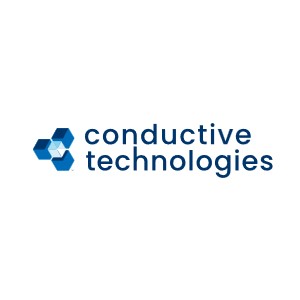
Conductive Technologies
Redefining Diagnostics with Predictive Sensing
6:45 pm
joint
Abstract
Alicen Pittenger
Director of Sales
Sensors are transforming diagnostics by enabling detection at the earliest molecular or physiological changes — before traditional symptoms appear. Using proprietary conductive materials and ultra-sensitive, low-power platforms, these sensors offer real-time, continuous monitoring for early intervention across medical and point-of-care applications. This talk will explore the technology’s core innovations, its impact on predictive diagnostics, and how sensors are setting a new benchmark for early disease detection and personalized care.
Redefining Diagnostics with Predictive Sensing
6:45 pm
Sensors are transforming diagnostics by enabling detection at the earliest molecular or physiological changes — before traditional symptoms appear. Using proprietary conductive materials and ultra-sensitive, low-power platforms, these sensors offer real-time, continuous monitoring for early intervention across medical and point-of-care applications. This talk will explore the technology’s core innovations, its impact on predictive diagnostics, and how sensors are setting a new benchmark for early disease detection and personalized care.
END
END
END
7:00pm
joint
Abstract
END
7:00pm
Track 1
Track 2
Atlant3D
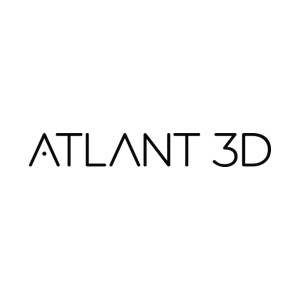
Atlant3D
Direct Atomic Layer Processing (DALP): Redefining Microfabrication
1:30 PM
joint
Abstract
Laszlo Izso
Applications Engineer
The exponential growth of computing, connectivity, and intelligent devices demands breakthroughs in how materials, electronics, and systems are built. Conventional semiconductor and microfabrication methods are increasingly constrained by limitations in scalability, flexibility, and sustainability.
Direct Atomic Layer Processing (DALP) offers a new approach: atomically precise, direct, and selective material processing on complex surfaces. Instead of incremental improvements to established methods, DALP represents a paradigm shift, from planar, rigid, and centralized chip-making toward flexible, on-demand, and design-driven fabrication.
This capability enables rapid material discovery and prototyping, accelerating the path from concept to functional device. It also opens new opportunities in advanced packaging, MEMS and sensors, and catalysis, where precision, adaptability, and material diversity are critical. DALP paves the way toward a future where innovation in materials and devices can happen faster, smarter, and with unprecedented freedom.
Direct Atomic Layer Processing (DALP): Redefining Microfabrication
1:30 PM
The exponential growth of computing, connectivity, and intelligent devices demands breakthroughs in how materials, electronics, and systems are built. Conventional semiconductor and microfabrication methods are increasingly constrained by limitations in scalability, flexibility, and sustainability.
Direct Atomic Layer Processing (DALP) offers a new approach: atomically precise, direct, and selective material processing on complex surfaces. Instead of incremental improvements to established methods, DALP represents a paradigm shift, from planar, rigid, and centralized chip-making toward flexible, on-demand, and design-driven fabrication.
This capability enables rapid material discovery and prototyping, accelerating the path from concept to functional device. It also opens new opportunities in advanced packaging, MEMS and sensors, and catalysis, where precision, adaptability, and material diversity are critical. DALP paves the way toward a future where innovation in materials and devices can happen faster, smarter, and with unprecedented freedom.
Beespenser Technology

Beespenser Technology
3D Electronics for Education, Research and Innovation
1:45 pm
joint
Abstract
Kaan Yapici
Additive and printed electronics are redefining how circuits are created by enabling direct printing of conductive and functional inks onto both rigid and flexible substrates. Advances in precision microdispensing now make it possible to move from a digital design to a working prototype within an hour. This capability serves a broad spectrum of users including academic researchers developing new materials, R&D teams accelerating prototyping cycles, educators integrating practical electronics into classrooms, and hobbyists driving innovation in the maker community. By combining dispensing, heating, and surface preparation in a compact platform, these technologies simplify workflows, reduce costs, and open opportunities for experimentation. The talk will highlight how accessible electronics fabrication empowers faster learning, deeper research, and creative exploration while supporting the development of next generation devices in areas such as wearables, sensors, and IoT.
3D Electronics for Education, Research and Innovation
1:45 pm
Additive and printed electronics are redefining how circuits are created by enabling direct printing of conductive and functional inks onto both rigid and flexible substrates. Advances in precision microdispensing now make it possible to move from a digital design to a working prototype within an hour. This capability serves a broad spectrum of users including academic researchers developing new materials, R&D teams accelerating prototyping cycles, educators integrating practical electronics into classrooms, and hobbyists driving innovation in the maker community. By combining dispensing, heating, and surface preparation in a compact platform, these technologies simplify workflows, reduce costs, and open opportunities for experimentation. The talk will highlight how accessible electronics fabrication empowers faster learning, deeper research, and creative exploration while supporting the development of next generation devices in areas such as wearables, sensors, and IoT.
Akoneer
Akoneer
Glass PCBs using SSAIL
2:00 pm
joint
Abstract
Tadas Kildusis
CCO
Various types of glasses are being adopted in semiconductor and electronics industries for substrates. Using SSAIL technology to plate copper traces directly on glass and other laser processes, we have developed multi layer glass PCB.
Glass PCBs using SSAIL
2:00 pm
Various types of glasses are being adopted in semiconductor and electronics industries for substrates. Using SSAIL technology to plate copper traces directly on glass and other laser processes, we have developed multi layer glass PCB.
DoMicro BV
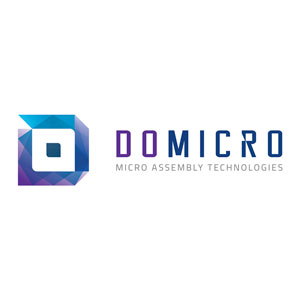
DoMicro BV
Transparent touch application using PEDOT
2:15 pm
joint
Abstract
Marcel Grooten
Visible
Printed electronics often involve touch applications on flexible transparent films, which creates a demand for transparent conductive materials. Integration of ICs enables the control of capacitive touch functionality, combined with serial communication protocols such as I2C or USB. This allows for much smaller and more efficient connections than traditional solutions using bulky cables. DoMicro is capable of making Flexible Hybrid Electronic touch applications with screen-printed transparent PEDOT electrodes, inkjet printed silver circuitry and Anisotropic Conductive Adhesive (ACA) bonded components. This presentation focusses on the integration processes of printed transparent conductive polymer polyethylene dioxythiophene (PEDOT:PSS).
Transparent touch application using PEDOT
2:15 pm
Printed electronics often involve touch applications on flexible transparent films, which creates a demand for transparent conductive materials. Integration of ICs enables the control of capacitive touch functionality, combined with serial communication protocols such as I2C or USB. This allows for much smaller and more efficient connections than traditional solutions using bulky cables. DoMicro is capable of making Flexible Hybrid Electronic touch applications with screen-printed transparent PEDOT electrodes, inkjet printed silver circuitry and Anisotropic Conductive Adhesive (ACA) bonded components. This presentation focusses on the integration processes of printed transparent conductive polymer polyethylene dioxythiophene (PEDOT:PSS).
Exhibition & Refreshment Break
Exhibition & Refreshment Break
Exhibition & Refreshment Break
2:30 PM
joint
Abstract
Exhibition & Refreshment Break
2:30 PM
Notion Systems GmbH
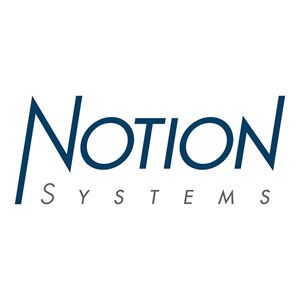
Notion Systems GmbH
High-Resolution, High-Impact: EHD Printing for Advanced Electronics
3:00 pm
joint
Abstract
Simon Rihm
Senior Process Development Engineer
Electrohydrodynamic (EHD) printing is rapidly emerging as a transformative technology in the field of advanced electronics, offering unprecedented resolution, material versatility, and scalability. This talk explores how EHD printing leverages electric fields to precisely deposit functional inks at the microscale, enabling the fabrication of high-performance electronic components on flexible, stretchable, and unconventional substrates.
We will delve into the core principles of EHD printing, highlight recent breakthroughs in multi-nozzle printhead design, and showcase real-world applications. Attendees will gain insights into how EHD printing is overcoming limitations of traditional lithography and inkjet methods, paving the way for next-generation electronics with enhanced functionality and reduced environmental impact
High-Resolution, High-Impact: EHD Printing for Advanced Electronics
3:00 pm
Electrohydrodynamic (EHD) printing is rapidly emerging as a transformative technology in the field of advanced electronics, offering unprecedented resolution, material versatility, and scalability. This talk explores how EHD printing leverages electric fields to precisely deposit functional inks at the microscale, enabling the fabrication of high-performance electronic components on flexible, stretchable, and unconventional substrates.
We will delve into the core principles of EHD printing, highlight recent breakthroughs in multi-nozzle printhead design, and showcase real-world applications. Attendees will gain insights into how EHD printing is overcoming limitations of traditional lithography and inkjet methods, paving the way for next-generation electronics with enhanced functionality and reduced environmental impact
HighLine Technology Gmbh

HighLine Technology Gmbh
Next-Gen Dispensing – From Ultra-Fine Metallization to Smart Coating
3:15 pm
joint
Abstract
Maximilian Pospischil
Managing Director
Since 2019, HighLine has been redefining PV metallization with ultra-precise fine lines up to <20 μm at dispensing speeds beyond 500 mm/s. Today, our portfolio extends from scalable dispensing to intermittent coating solutions, supported by customized nozzle kits and versatile MONO & MULTI print head systems.
With intelligent automation – from integrated cuckoo units to AI-driven recipe optimization – HighLine empowers next-level production across industries.
Next-Gen Dispensing – From Ultra-Fine Metallization to Smart Coating
3:15 pm
Since 2019, HighLine has been redefining PV metallization with ultra-precise fine lines up to <20 μm at dispensing speeds beyond 500 mm/s. Today, our portfolio extends from scalable dispensing to intermittent coating solutions, supported by customized nozzle kits and versatile MONO & MULTI print head systems.
With intelligent automation – from integrated cuckoo units to AI-driven recipe optimization – HighLine empowers next-level production across industries.
SUSS MicroTec Solutions
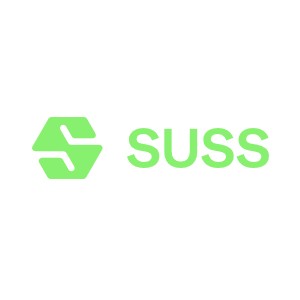
SUSS MicroTec Solutions
Inkjet Printing for Semiconductor Manufacturing: A Scalable and Material Saving Solution
3:30 pm
joint
Abstract
Dennis Kuppens
Product Manager
This presentation introduces a novel high-precision inkjet printer designed for advanced printed electronics applications. The system features a flexible printhead configuration, next to the dozen existing printhead types the machine already supports, now integrating a printhead for ultra-fine resolution (3.5 picoliter droplets) and an printhead that accommodates up to eight different inks, including water-based formulations crucial for pharmaceutical applications. This unique setup enables both highly detailed micro-printing and versatile multi-material deposition, significantly enhancing research capabilities in printed electronics and opening new avenues for scientific exploration
Inkjet Printing for Semiconductor Manufacturing: A Scalable and Material Saving Solution
3:30 pm
This presentation introduces a novel high-precision inkjet printer designed for advanced printed electronics applications. The system features a flexible printhead configuration, next to the dozen existing printhead types the machine already supports, now integrating a printhead for ultra-fine resolution (3.5 picoliter droplets) and an printhead that accommodates up to eight different inks, including water-based formulations crucial for pharmaceutical applications. This unique setup enables both highly detailed micro-printing and versatile multi-material deposition, significantly enhancing research capabilities in printed electronics and opening new avenues for scientific exploration
ImageXpert
ImageXpert
Selecting the Right Inkjet Printhead for Advanced Electronics Applications
3:45 pm
joint
Abstract
Jochen Christiaens
Inkjet printhead selection is a critical step in the development of high-performance printed electronics systems. The printhead directly impacts print resolution, material compatibility and selection, production throughput, and overall process reliability. This presentation will explore a structured approach to printhead selection tailored for advanced printed electronics applications, where functional inks must be jetted with high precision and consistency. We will examine the key parameters influencing printhead choice, including drop volume, nozzle density, waveform customization, material compatibility, and more all within the context of application-specific requirements.
We’ll compare the latest advancements from leading piezoelectric printhead technologies and highlight performance trade-offs and integration considerations for both development and production environments. Real-world case studies will be used to illustrate how different printhead architectures perform with challenging ink formulations and substrates. Attendees will leave with a clear methodology for evaluating and selecting printheads that align with their performance goals, manufacturing constraints, and future scalability.
Selecting the Right Inkjet Printhead for Advanced Electronics Applications
3:45 pm
Inkjet printhead selection is a critical step in the development of high-performance printed electronics systems. The printhead directly impacts print resolution, material compatibility and selection, production throughput, and overall process reliability. This presentation will explore a structured approach to printhead selection tailored for advanced printed electronics applications, where functional inks must be jetted with high precision and consistency. We will examine the key parameters influencing printhead choice, including drop volume, nozzle density, waveform customization, material compatibility, and more all within the context of application-specific requirements.
We’ll compare the latest advancements from leading piezoelectric printhead technologies and highlight performance trade-offs and integration considerations for both development and production environments. Real-world case studies will be used to illustrate how different printhead architectures perform with challenging ink formulations and substrates. Attendees will leave with a clear methodology for evaluating and selecting printheads that align with their performance goals, manufacturing constraints, and future scalability.
droptical GmbH

droptical GmbH
Inline, full-printhead camera inspection for inkjet
4:00 pm
joint
Abstract
Daniel Föste
Inkjet printing nowadays has a lot of different tools for inspection of the print process. However dropwatching, which provides the most information, is mainly used for waveform optimization in the laboratory setup so far and, less commonly, as a separate checking station in a plant. This talk will sketch the current development of droptical systems to provide an inline camera inspection solution covering all nozzles of a printhead simultaneously. This ensures consistent print quality and offers a significant advantage when changing to new batches of ink. Especially in modern applications that use higher viscosity inkjet printing, this can provide huge benefits regarding process stability and early scrap detection. In addition, an inline camera offers the possibility of closed loop control.
Inline, full-printhead camera inspection for inkjet
4:00 pm
Inkjet printing nowadays has a lot of different tools for inspection of the print process. However dropwatching, which provides the most information, is mainly used for waveform optimization in the laboratory setup so far and, less commonly, as a separate checking station in a plant. This talk will sketch the current development of droptical systems to provide an inline camera inspection solution covering all nozzles of a printhead simultaneously. This ensures consistent print quality and offers a significant advantage when changing to new batches of ink. Especially in modern applications that use higher viscosity inkjet printing, this can provide huge benefits regarding process stability and early scrap detection. In addition, an inline camera offers the possibility of closed loop control.
Exhibition & Refreshment Break
Exhibition & Refreshment Break
Exhibition & Refreshment Break
4:15 pm
joint
Abstract
Exhibition & Refreshment Break
4:15 pm
VTT Technical Research Centre of Finland

VTT Technical Research Centre of Finland
Printed hybrid electronics accelerated concepting and verification
4:45 pm
joint
Abstract
Antti Kemppainen
Visible
Printed and hybrid electronics has been introduced in various application during last years on flexible and even elastic substrates - even in roll processes. One obstacle in development has been significant costs and time needed in concept and prototyping phase. In this presentation advances in assembly, converting and characterization for faster prototyping is discussed.
Printed hybrid electronics accelerated concepting and verification
4:45 pm
Printed and hybrid electronics has been introduced in various application during last years on flexible and even elastic substrates - even in roll processes. One obstacle in development has been significant costs and time needed in concept and prototyping phase. In this presentation advances in assembly, converting and characterization for faster prototyping is discussed.
Fraunhofer IFAM

Fraunhofer IFAM
Hybrid electronics compared to conventional PCBs: their advantages and challenges
5:00 pm
joint
Abstract
Hybrid electronics compared to conventional PCBs: their advantages and challenges
5:00 pm
Printed multilayer PCBs can have significant environmental advantages over traditional FR4 circuit boards. Nevertheless, there are considerable challenges in achieving a similar level of complexity and reliability.
RISE Research Institutes of Sweden AB
RISE Research Institutes of Sweden AB
How to get started with hybrid printed electronics
5:15 pm
joint
Abstract
Duncan Platt
Group Manager
Printed electronics is an emerging field that promises to revolutionize various industries with its potential for creating flexible, lightweight, and cost-effective electronic devices. However, despite its significant advantages, many researchers and developers encounter substantial hurdles when trying to get started in this domain. These challenges include limited access to specialized materials and equipment, a steep learning curve associated with understanding the intricate fabrication processes, and the need for interdisciplinary knowledge spanning electronics, materials science, and engineering. To address these barriers, it is vital to develop deep knowledge, foster collaborative initiatives, and streamline access to essential tools and materials.
Hybrid printed electronics, which combine traditional silicon-based components with printed electronic elements, present a compelling pathway to enhance device functionality, form factor and performance. By daring to explore hybrid approaches, developers can leverage the strengths of both conventional and printed electronics to create innovative solutions.
We will discuss how to reduce the hurdles and get started with printed electronics and hybrid electronics. By encouraging experiments with hybrid designs and collaborative networks that bridge gaps between different areas of expertise, as well as with improved access to materials and equipment, we can together create new innovations.
How to get started with hybrid printed electronics
5:15 pm
Printed electronics is an emerging field that promises to revolutionize various industries with its potential for creating flexible, lightweight, and cost-effective electronic devices. However, despite its significant advantages, many researchers and developers encounter substantial hurdles when trying to get started in this domain. These challenges include limited access to specialized materials and equipment, a steep learning curve associated with understanding the intricate fabrication processes, and the need for interdisciplinary knowledge spanning electronics, materials science, and engineering. To address these barriers, it is vital to develop deep knowledge, foster collaborative initiatives, and streamline access to essential tools and materials.
Hybrid printed electronics, which combine traditional silicon-based components with printed electronic elements, present a compelling pathway to enhance device functionality, form factor and performance. By daring to explore hybrid approaches, developers can leverage the strengths of both conventional and printed electronics to create innovative solutions.
We will discuss how to reduce the hurdles and get started with printed electronics and hybrid electronics. By encouraging experiments with hybrid designs and collaborative networks that bridge gaps between different areas of expertise, as well as with improved access to materials and equipment, we can together create new innovations.
END
END
END
5:30 pm
joint
Abstract
END
5:30 pm







